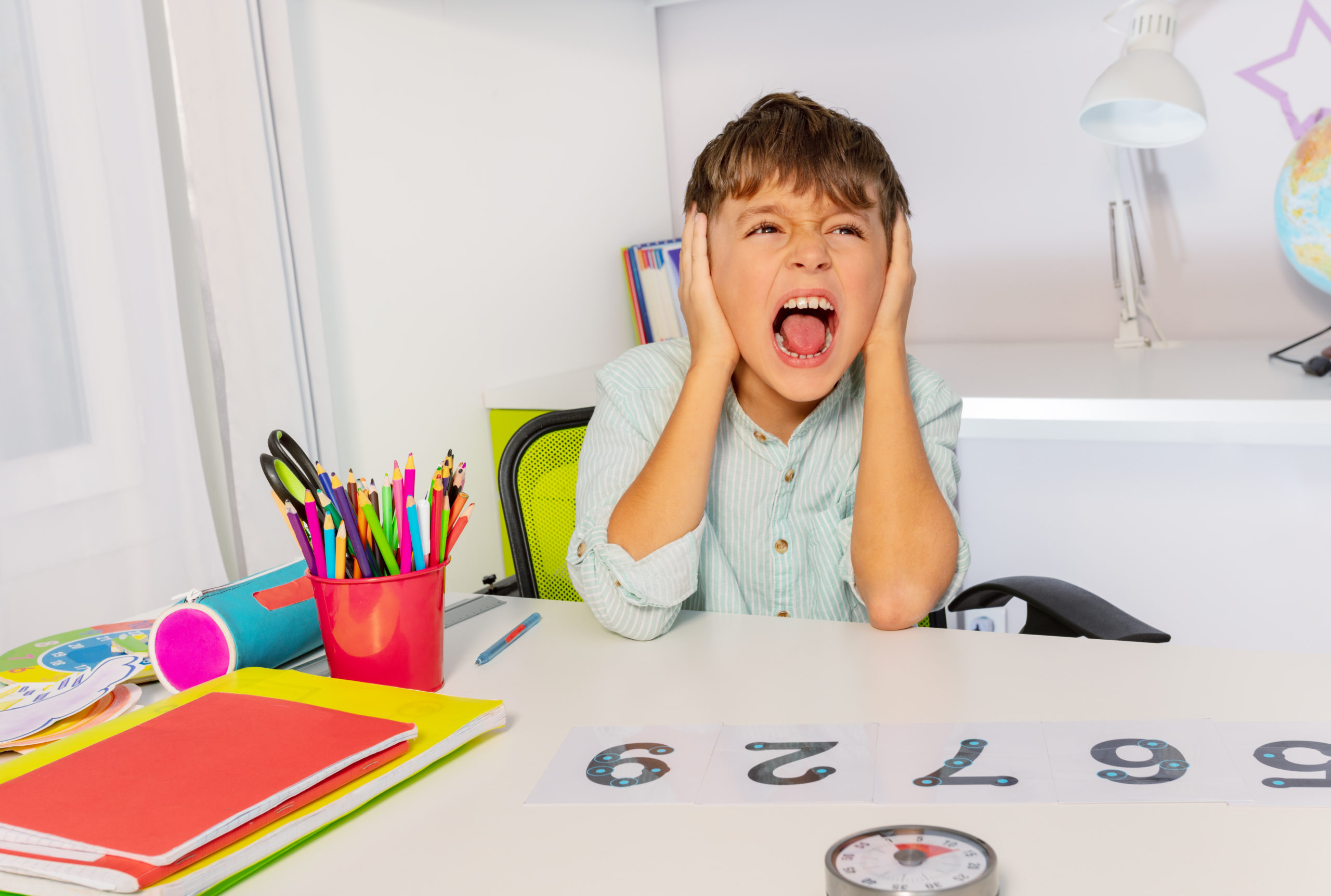By Amy Inman, BCBA
Sensory Overload Overview
Sensory overload occurs when one or more of an individual’s five senses receives too much stimulation from the environment. This event can cause a person’s brain to have difficulty processing the environmental input. When this issue happens, the body reacts by attempting to escape the sensory stimulation.
Many individuals associate sensory overload with feelings of being uncomfortable, panicky, or confused. People of all ages experience sensory overload at some point in their lives. However, other individuals experience this type of overstimulation on a daily basis.
For some, walking into a crowded restaurant with loud noises and bright lights may trigger a sensory overload experience. For others, a strongly scented perfume or room air freshener can bring about similar feelings.

According to an article published in JAMA Pediatrics by Dr. Kong and Dr. Moreno in 2018 titled Sensory Processing in Children, 1 in 6 children have sensory processing difficulties with the rate of prevalence higher in children with an autism spectrum disorder diagnosis.
Autism and Sensory Issues
The Diagnostic and Statistical Manual of Mental Disorders (DSM-5) is a guidebook used by healthcare professionals to diagnose mental disorders. According to the DSM-5, “Hyper- or hyporeactivity to sensory input or unusual interest in sensory aspects of the environment” can be used as a diagnostic criterion to assist in diagnosing ASD. This suggests that a significant number of individuals with autism have some degree of sensory processing abnormalities.
These abnormalities may present themselves in one of the two following ways:
Hyperreactivity is defined as having an abnormally high sensitivity to sensory stimuli.
Examples include:
- Frightened by loud or sudden noises such as baby crying or vacuum cleaner
- Picky eaters due to intolerance of certain food textures or flavors
- Insistence on wearing the same clothing each day due to a dislike in various cloth textures
- Aversion to general hygiene activities such as haircuts, bathing, or nail clipping
Hyporeactivity is described as having an unusually low sensitivity or response to sensory stimuli.
Examples include:
- Low or no response to pain and may not notice a cut or wound on their body
- Minimal to no response to loud or sudden noises
- Visual obsession with bright lights
- Fascination with different tactile stimuli and will excessively touch or feel almost anything in the environment
Oftentimes, individuals with an autism spectrum disorder have difficulty communicating the sensory triggers that are causing them to feel overwhelmed or upset. They may try to communicate in other ways to those around them.
For those who experience hyperreactivity to sensory stimuli, the individual may react and attempt to communicate by engaging in behaviors such as crying, running away, engaging in self-harm, or attempting to stop the aversive stimuli by hitting or kicking someone near them.
For those who have hyporeactivity to sensory stimuli, the individual may engage in a high rate of hand-flapping, skin pinching, or visual stimulation.
Warning Signs: Does my child experience Sensory Overload?
Your child may experience sensory overload with certain environmental stimuli. The best way to identify these triggers is to record what took place immediately before and immediately after the concerning behavior. This type of data collection is called ABC (Antecedent, Behavior, Consequence) data.
Here are some examples of ABC data:

Recording this type of data regularly can help you, teachers, or service providers identify a pattern of potential triggers. It can also provide information on what type of communication or replacement behaviors may be appropriate to teach. Data can be tracked using standard paper and pencil methods or using a data collection app on your phone or device. I recommend the ABC Tracker app. There is a free version, and it is very user-friendly. It also allows for the tracked data to be sent via email to others who may want access to it. You can find the app here: ABC Tracker – Apps on Google Play (bingj.com).

How to help sensory overload
Once the potential triggers are identified, antecedent strategies along with replacement behaviors can be used to decrease the intensity of sensory overload episodes. In addition, desensitization strategies can be utilized to teach the child tolerance of the sensory overload triggers.
Antecedent Strategies: These are the events or stimuli in the immediate environment that will attempt to prevent the sensory overload episode from happening.
Replacement Behaviors: These are the appropriate behaviors that will be taught to the individual to utilize when sensory overload occurs.
Desensitization: This strategy is used to provide gradual exposure to the trigger situation in smaller and more manageable amounts. This allows the individual to contact the trigger in a controlled setting, which helps to process the sensory input.
Here are some examples with potential strategies to consider to help reduce the feelings associated with sensory overload.

Additional strategies:
- Reinforcement: Provide a preferred item or activity to your child IMMEDIATELY after your child has successfully tolerated any sensory triggers. The specific reinforcer should be something that your child really likes and would be excited to receive. This could include any of the following:
- Social praise such as words of encouragement, high-fives, or tickles
- Tangible items such as candy, toys, or games
- Alone time or a break away from others
- Priming: This preventative strategy involves providing relevant information about the upcoming event to the child and letting them know what can or will take place at that specific location or time. This strategy helps the child prepare for the potential sensory overload event. Parents can also use pictures or videos to present needed information.
- Example: You take your child to a parade. Prior to arriving, you tell your child that there will be loud fire trucks in the parade and then remind your child that when a fire truck siren starts to get close, the child may cover his ears or put on headphones to block out the sound.
These strategies are meant to be used to help decrease the frequency and intensity of sensory overload episodes. If you have additional concerns about your child’s sensory needs, talk to your family doctor or child’s pediatrician. The doctor should be able to make a referral to the appropriate service provider such as an Occupational Therapist. They may recommend additional strategies or resources.
References:
Centers for Disease Control and Prevention. “Diagnostic Criteria.” Centers for Disease Control and Prevention, 18 Apr. 2016, www.cdc.gov/ncbddd/autism/hcp-dsm.html.

